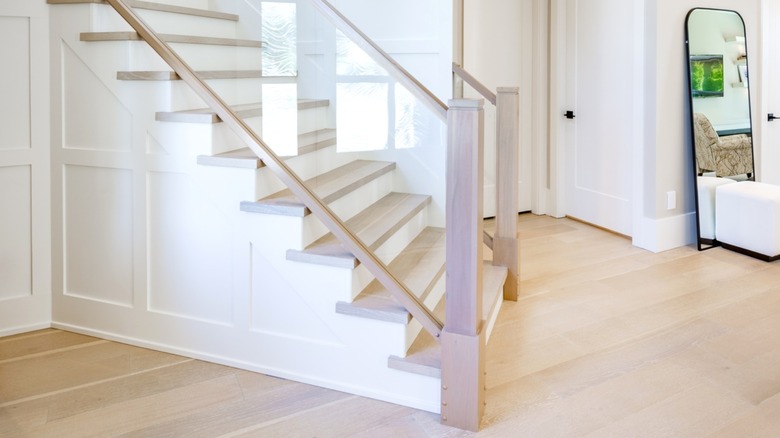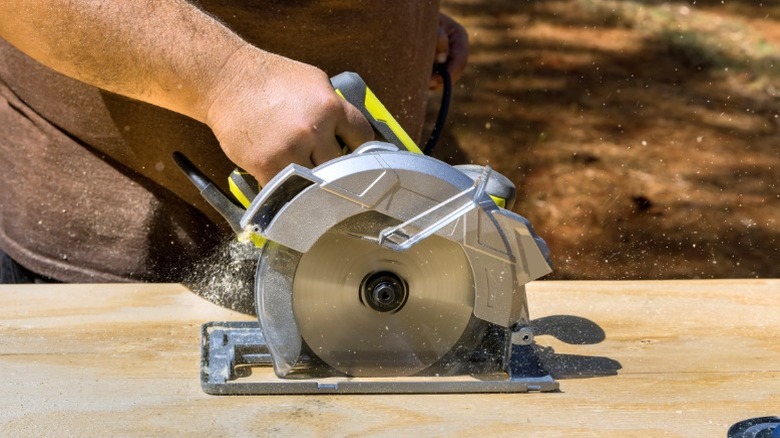DIY The Perfect Bench For Your Cozy Corner Space
We may receive a commission on purchases made from links.
Awkward, underused nooks around entryways and staircase landings are all too typical in the modern home, and while their size, shape, and location may be unique from one house to the next, most can benefit from a common addition — a cozy DIY bench! Whether serving as seating for people putting on their shoes or a stand for plants and decor, benches are the malleable solution to give any random corner a fitting purpose and complete the overall space. They're great for daily utility, but one of the best parts about them is the design. Creating this DIY is fun and straightforward, with some simple constructions only requiring tools that every homeowner should have in their arsenal already.
Plan the bench by measuring your corner and sketching the build. When working with an awkward corner that's more than 90 degrees, determine the angle with an angle finder, such as this PDDYIER Digital Angle Finder Protractor. If you know the basics of using a speed square, you can also find your corner angle this way. Generally, an entryway bench will sit around 20 inches high with a depth of 15 to 20 inches. You can adjust these dimensions to suit the corner's size and how you want to use the bench. Finally, determine how you want to fashion the legs, and any design and storage features you want to add to personalize the form and function.
Steps for making your cozy DIY corner bench
For a simple build, you'll only need dimensional lumber or plywood. Use one large piece, such as ¾-inch plywood, or join multiple boards to make a wider surface. It's a great project to repurpose leftover floor scraps, pallet wood, and other unused materials.
Make the angled seat by having your boards meet at the wall corner, cutting the joint edge on both pieces to match the angle. For instance, if the corner angle is 135 degrees, you would have to take off 45 degrees total between the ends of both boards. Find the angle, and cut the boards with a miter saw, circular saw, or table saw. With your boards sized and cut, you can join them at the edge. Use a pocket hole jig to hide the screw holes on the underside. You can also make matching holes in the ends of the boards for dowels, biscuits, and other concealed connectors to use with wood glue. Put legs under both sections near the joint to prevent the bench from breaking under excessive force.
With the bench in place, add your desired paint and install functional features around it. Attach simple shelves underneath for shoes and wall hooks for coats. Or, give each family member a personal basket to manage their going-out gear. Toss in a few decorative pillows and surrounding wall decor, and your simple DIY bench will give your corner space a generous boost.

